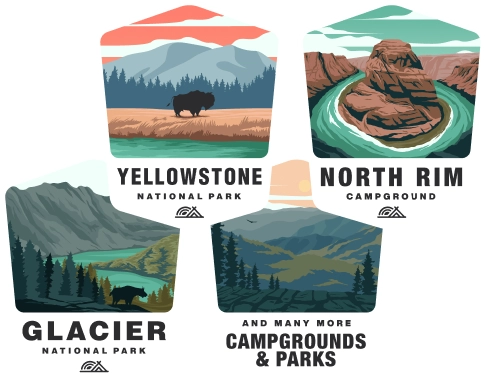Camping at BOAT RAMP
Overview of Historic Lake Scott State Park
Historic Lake Scott State Park, situated in Western Kansas, is known for its picturesque landscapes which include springs, wooded canyons, craggy bluffs, and a 100-acre lake. The park is rich in history, with evidence of Pueblo Indian homes dating back to the 1600's, and it offers a diverse range of activities that include hiking, swimming, fishing, and wildlife observation. The park's tranquil environment and abundance of natural features make it a popular destination for outdoor enthusiasts and campers.
Boat Ramp Usage
Access to the Water: The boat ramp at Historic Lake Scott State Park provides convenient access to the lake for those looking to enjoy boating, fishing, or simply a day on the water. Before using the ramp, make sure to check local water conditions and ramp operational status.
Rules and Regulations:
- Boating Permits: Depending on your state and the size of your boat, a permit might be required for boating. Always check with the park's office for the current boating regulations.
- Boat Types Allowed: There may be restrictions on the types of boats that can be launched from the ramp; for example, some parks may limit the use of gas-powered engines and only allow electric trolling motors or paddle boats.
- Inspection for Invasive Species: Watercraft may need to be inspected for aquatic invasive species to protect the lake's ecosystem. Be prepared for an inspection and clean your boat before and after entering the lake.
- Operating Hours: The boat ramp might have specific hours of operation that could coincide with park hours. These are important to follow for both legal access and personal safety.
Camping Information
Camping Sites: The park offers numerous campsites ranging from primitive to those with full utility hookups. Camping is a great way to extend your stay and enjoy early mornings or evenings on the lake. Make sure you have a valid camping permit which can usually be obtained at park entrances or offices.
Amenities: Campsites may feature various amenities, such as fire pits, picnic tables, and nearby restrooms. Check the park’s map for the locations of these amenities and any additional features such as playgrounds, shower facilities, or dump stations.
Reservations: For certain times of the year, campsites may be in high demand, so reservations are recommended. You can typically reserve a site online or via phone through the park's reservation system.
Safety Reminders
Water Safety: Always wear life jackets while on the water, regardless of your swimming abilities, and be aware of varying lake conditions. Keep an eye out for weather changes, and follow any posted signage about hazards.
Wildlife Precautions: As you’re in a natural habitat, be respectful of local wildlife. Store food securely and dispose of waste properly to avoid attracting animals to the campsite.
Leave No Trace: Help preserve the beauty and cleanliness of the park by following Leave No Trace principles – pack out what you pack in, stay on designated trails, and leave what you find.
Emergency Protocols: Have a way to contact park officials in case of an emergency and familiarize yourself with the location of the nearest emergency services.
Before planning your trip, always check with Historic Lake Scott State Park for the most recent and detailed information regarding the boat ramp and camping specifics. Park authorities can provide up-to-date details on lake levels, ramp conditions, campsite availability, fees, and other important notices that could impact your visit.
